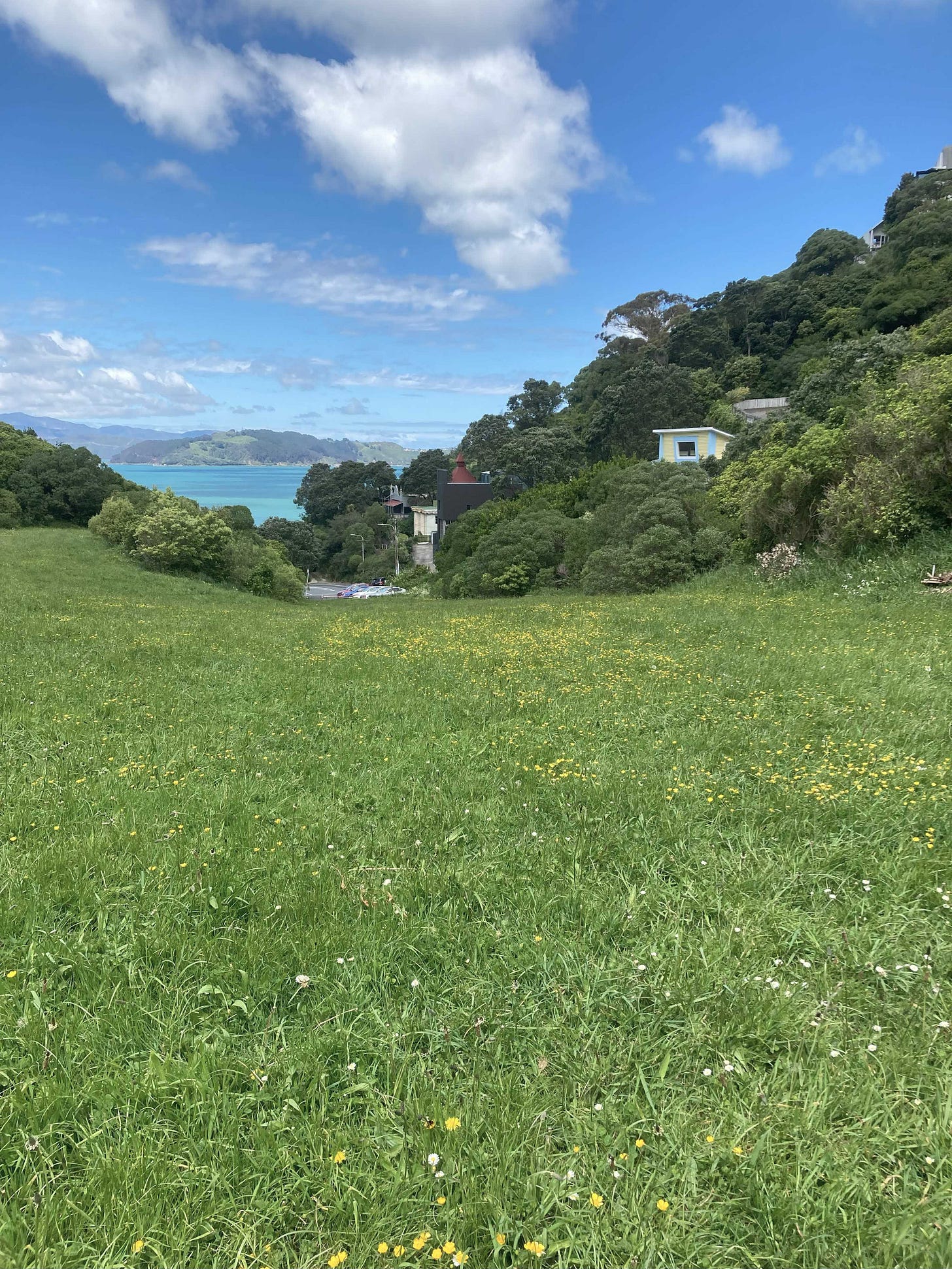A profusion of buttercups, with their glossy, yellow petals, brightens the park where I’m walking my dog. Even though there’s a cold wind funnelling up the narrow valley, the sun is shining and the day carries the energy of spring. Above me, I hear an occasional screech or whistle, the call of a kākā flying overhead. From the trees, I hear the trilling call of the riroriro. I can feel my mood lifting.
At home, I curse the buttercups. Their wiry roots cling tightly to the soil as they creep their way through my garden. Farmers hate them too, because they are unpalatable to livestock, and toxic to any animal desperate enough to eat them. But here, in a sloping patch of grass growing in a Wellington gully, they do no harm.
This patch of grass and buttercups is one of the few dog exercise areas in the suburb of Khandallah, where I live. Most days, coming here is a drudge. I’d rather walk in the forest, but there are too many other dogs there. My dog, Donna, is reactive, meaning that she starts barking and lunging if another dog walks up to her, or even looks at her in a way she doesn’t like. There are very few places I can take her. The park I’m in is usually empty on a weekday lunchtime, so she can have a good run and not be bothered by anyone else. It’s also just around the corner from home, so doesn’t take me away from work for too long.
I’ve walked around this park hundreds of times, but today I’m paying attention. I notice all the different flowers in the grass, not only the buttercups, but lawn daisies, dandelions, two different kinds of clover and the sausage-shaped head of plantains. The council leaves these fields for months between mowings, so everything gets tall. Last year, the park was waist high and I could barely see Donna. This year, it isn’t quite as tall, but it’s still definitely a meadow rather than a lawn.
Donna has bounded away up the hill, and she turns back to look at me. She takes a moment, then she’s back to sniffing everything. I follow, trying to keep up a good pace up the hill, so I get some worthwhile exercise. When I reach the edge of the grass at the top of the park, I skirt the swampy area and head for the edge of the forest.
From what I know of local history, this area would have been cleared for farmland by the 1890s. At some point in the next century – I’m not sure exactly when – the farmers gave up on it. After that, it’s most likely that the land became covered in a mass of prickly gorse. For a couple of decades, gorse would have dominated, but this aggressive weed has an Achilles heel – it requires full sun to grow. Some of our native species, on the other hand, thrive in shade. Birds flying overhead deposit seeds of species like māhoe in their own miniature packages of fertiliser. These germinate in the shade of gorse, then grow through it and form a canopy over the top. In the shade of the native trees, the gorse dies, leaving the first stage in a native forest, at least in areas which are wet and fertile enough.
It's not the same as the forest which was here before, and it’s not as rich as a forest which has grown up through native species such as kānuka, but it’s still forest. It’s still home to native birds and insects, it’s still holding the soil, purifying the water and sequestering carbon.



